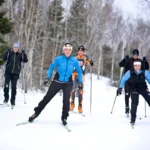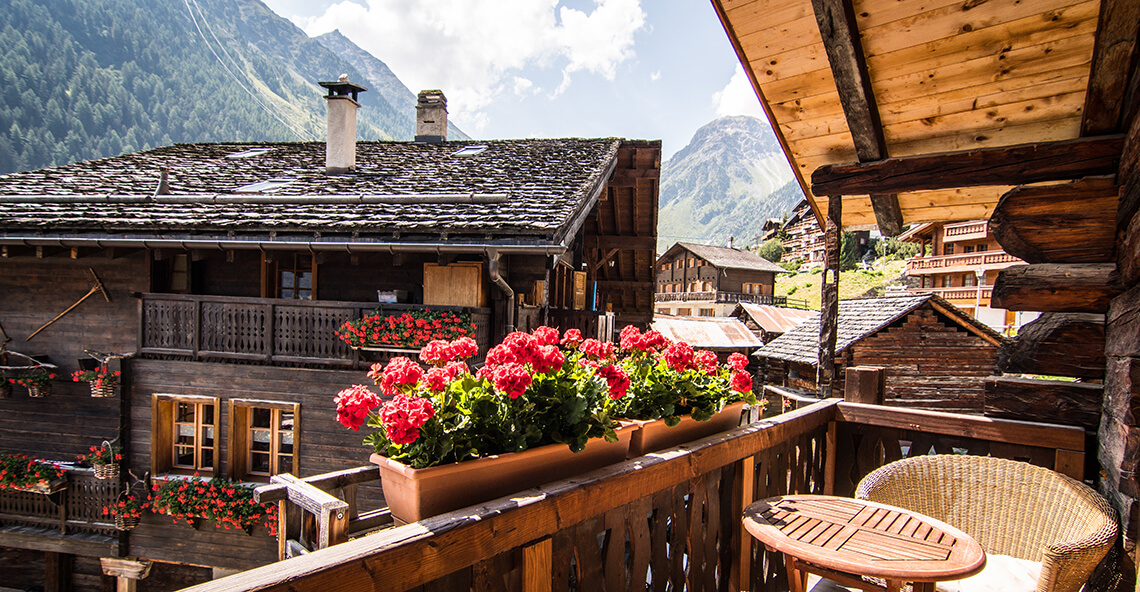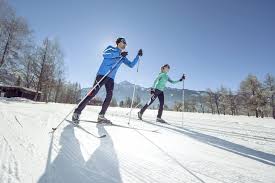
Pairing Piste with Pinot

Spice up your ski trip with a sip of your destination’s finest local wines—which, as we’ll see, are often some of the finest in the world.
Perhaps because excellent skiing often overlaps with an ideal climate for wine grape cultivation, across Europe and North America we find snowy centers of outdoor adventure that also happen to be hotbeds of world class viniculture. Below is a sampling of these locales perfectly suited for days of touring altitudinous peaks and beautiful trails, followed by afternoons and evenings of apres-ski glasses and exquisite accompanying dishes.


Grindelwald, Switzerland
Centered on the massive and renowned ski area of the same name, Grindelwald encompasses three separate mountain ranges and two vast valleys. A brand-new gondola and railway station coming this year promise to increase skiers’ access to these magnificent vistas, whilst cutting down on the resort crowds. Free of lines entirely is the extensive network of cross country ski trails that branch out from Grindelwald into the farther reaches of the Jungfrau region, extending even beyond the Swiss border.
After you’ve coasted across miles of fine Alpine powder, it’s time to reward yourself by dabbling in Switzerland’s diverse and deliciously refined native wines. Start with a neutral white made from the indigenous Chasselas grape, whose mild and dry character combine quite naturally with the country’s famous raclettes and fondues. For something slightly rarer and more delicate, seek out a Burgundy-variant of Completer, which packs an aromatic body brimming with fruity acidity and undergirded by a rich mineral base.
St. Nicolas de Véroce, France
Centered on the quietly decadent five-star Armancette Hotel, this hidden away French hamlet boasts ski attractions all its own, as well as top-notch dining and to-die-for access to the region’s finest wines. Start your discovery of this unique winter retreat at the Megéve/St. Gervais ski area, where a day pass will grant you access to almost 300km of terrain perfect for alpine skiers of all abilities. For those looking to avoid the lifts, the village itself offers near-endless trails maintained for cross country skiing, hiking and snowshoeing.
Whether you snowshoe, carve down the big slopes, or tour across this breathtaking country, be sure to circle back to the Armancette, where chef Antoine Westermann serves gastronomic innovations that blend the rich food history of rural France with the finest and freshest local ingredients, all given modern and exciting twists (take, for instance, the intriguingly inimitable spit-roasted pigeon, fricassee of mushroom, celery mousseline, and salmis sauce). This exceptional menu is backed up by an equally exceptional 4,000 bottle wine cellar highlighting the gems of the local Savoie region, which include the light and zippy Jacquére variety, bottled as Vin de Savoie for whites, and the understated though hdellghtfully peppery Mondeuse Noire for reds.





Alta Badia, Italy
Tucked away in the heart of the Dolomites, Alta Badia’s rugged and intimidating topography is balanced out by carefully maintained trail networks and generous, easy going North-Italian hospitality. The Alta Badia Resort is a gateway to over 500km of interconnected slopes that span half a dozen Dolomite mountain passes. If you are particularly intrepid, be sure to ski the famous Sellaronda, the “queen of ski circuits,” which through a combination of cable cars, lifts and slopes loops skiers along a gorgeous 40km journey across the peaks. If you prefer to traverse the dolomites untethered by cable cars and gondolas, three Nordic centers (in the nearby towns of Corvara, Armentarola and La Val) offer over 30km of the finest valley skiing around, with wide, perfectly cut corduroy pistes that wind in gentle loops accentuated by steep jaunts into the adjacent hills.
Located in the wondrous borderland between Northern Italy and Southern Austria, where Italians speak German and where German wines take on a southern lightness, the Val Badia region boasts some of the finest and most unique flavors in Central-South Europe. Bursting with Michelin star restaurants and meticulously cultivated vineyards, the wining and dining on a trip to Alta Badia is truly world class. Transplants of well-known grapes, like Pinot Grigio and Pinot Bianco take on a particular complexity and depth of flavor not found in grapes grown outside the Dolomites. For an unpretentious yet exquisite introduction to the breadth of this region’s culinary offerings, be sure to check out La Stua de Michel in Corvara.
Alpino Vino, Telluride, Colorado
If you’re craving a taste of European Alpine life, beautifully translated into an American setting and palate, this restaurant with the distinction of being the highest elevation fine dining establishment on the continent is a good place to start. After a day of cruising the slopes, or perhaps pounding the trails at Telluride Nordic Center, make your way to the ski area’s Gold Hill Express. From there, cruise down the panoramic trail See Forever, right up to the front door of Alpino Vino—and yes, this place is so above average that one must reach it on skis (though they also offer snow coach transportation)!
Once inside the rustic stone and exposed wood restaurant, Chef Nicola Peccedi’s Italian Alpine Gourmet five course taster menu will complete your journey to another time on another continent. Dishes incorporating handmade pasta and richly herbed and braised short rib will warm stomach and soul, while an optional, sommelier-selected wine accompaniment lends the whole affair a flair and depth of flavor only found at the finest establishments. With wines from all over the world, the cellar at Alpino Vino both highlights the finest bottles of its immediate region and can transport your taste buds anywhere. At 12,000 feet above sea level, the sky at this Colorado gem really is the limit.











































Fun and fascinating, a totally new angle for XC – thanks!